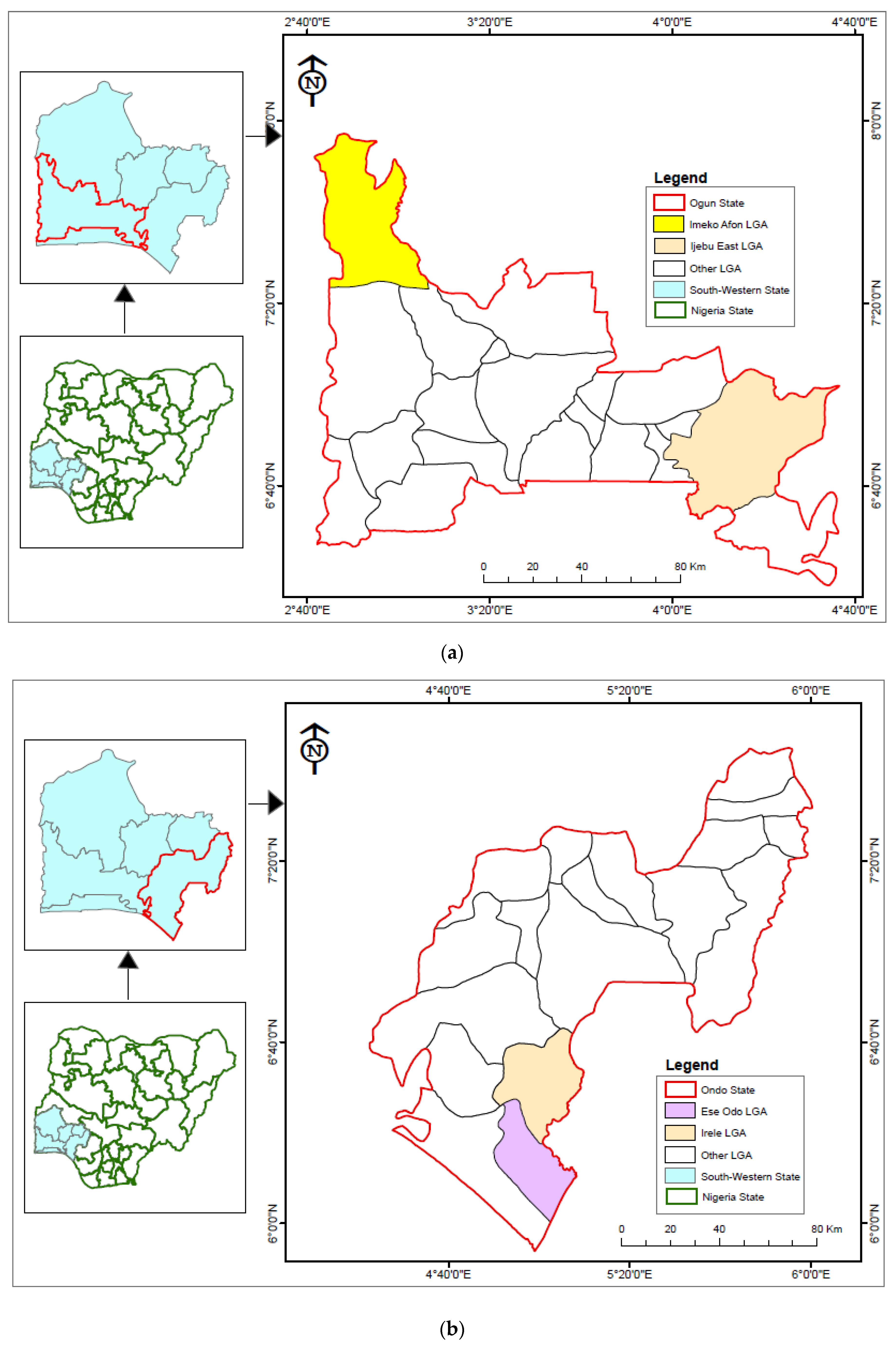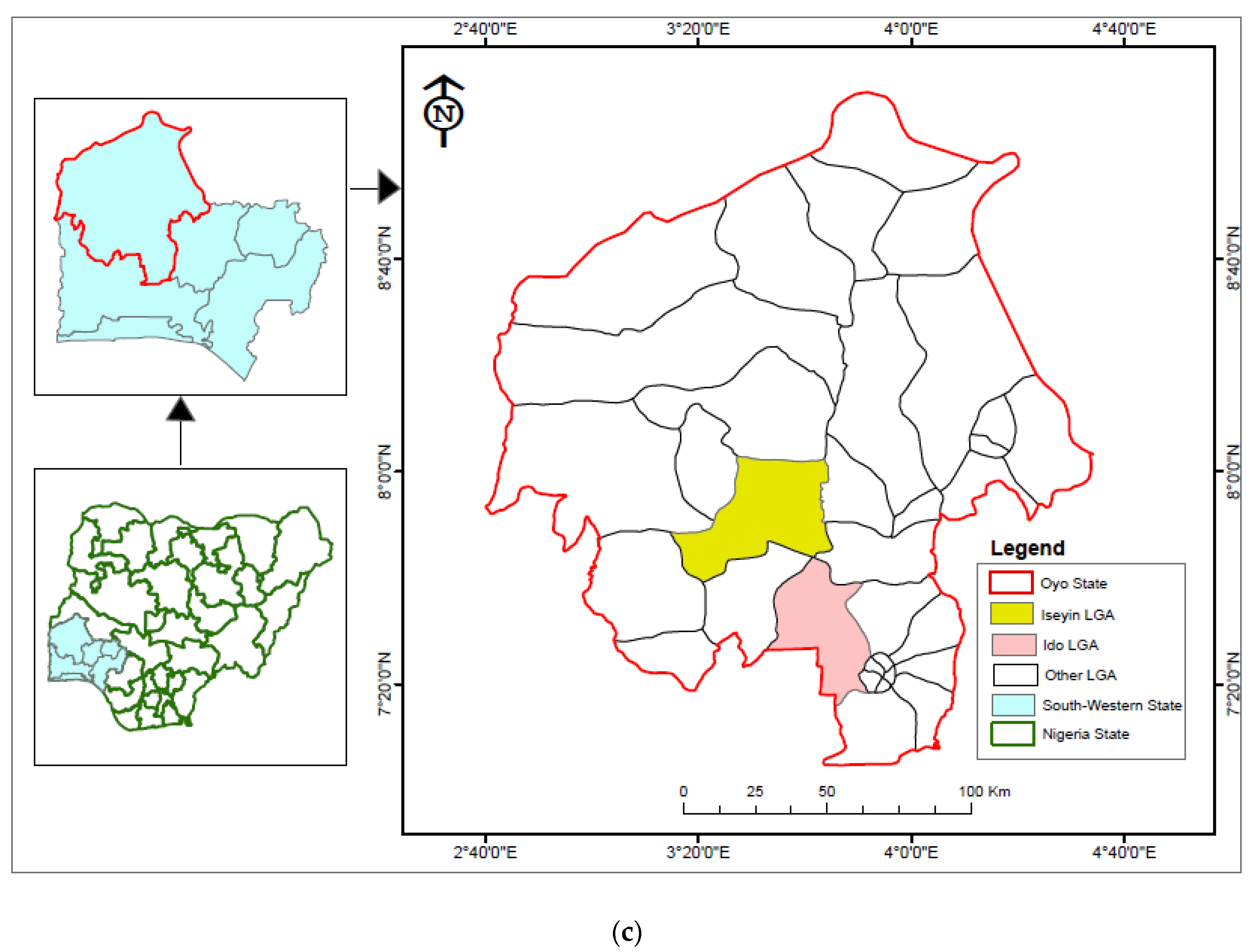
| Version | Summary | Created by | Modification | Content Size | Created at | Operation |
|---|---|---|---|---|---|---|
| 1 | Catherine Abiola Oluwatoyin Akinbami | + 2308 word(s) | 2308 | 2021-08-11 09:44:43 | | | |
| 2 | Vicky Zhou | + 43 word(s) | 2351 | 2021-08-17 03:29:45 | | |
Video Upload Options
Climate change and migration have been issues of concern among scientists for a number of decades, and various arguments have been made asserting that climate change is becoming a major driver of population displacement. It was noted in the early 1990s that “climate change greatly influenced human migration, causing displacement of millions of people who suffered erosion, agricultural disruption, and flooding”. Globally, about 25 million people were forced from their families and livelihoods during the mid-1990s, due to severe environmental crises, such as drought, flooding, pollution, and natural disasters. This type of movement can be called a “forced migration”, as it is a movement in which elements of coercion exist, such as threats to life and livelihoods. Forced migration is not only caused by environmental “push” factors, such as sea level rise, but also “pull” factors, which can also be environmental, social, and economic.
1. Introduction
2. Migration, Climate Change and Entrepreneurship
2.1. Migration and Climate Change
The world is still expected to become hotter, with an average temperature increase between 1.8 and 4 °C by the 2060s if significant policy changes are not implemented. This may lead to increasingly frequent and severe extreme weather events, such as droughts, storms, and floods [19][20][21], and general changes in rainfall patterns across the globe. Although some countries such as Bangladesh and India will experience more rains by 2050, the annual rainfall in sub-Saharan Africa will be reduced by 10 percent [22][23]. This prediction means that most African countries, particularly rural areas, which constitute the so-called food basket and are dependent on agriculture, will be significantly affected. This also implies that the livelihoods of the rural dwellers will be negatively affected, leading to increases in the rate of poverty and food insecurity, which may result in people migrating to find better conditions [24]. Figure 1a–c shows the study area maps.

 Figure 1. (a): Ogun State showing Imeko Afon and Ijebu East LGAs; (b): Ondo State showing Irele and Ese Odo LGAs; (c): Oyo State showing Iseyin and Iddo LGAs. Insert of Nigeria States and southwestern States.
Figure 1. (a): Ogun State showing Imeko Afon and Ijebu East LGAs; (b): Ondo State showing Irele and Ese Odo LGAs; (c): Oyo State showing Iseyin and Iddo LGAs. Insert of Nigeria States and southwestern States.
2.2. Migration and Entrepreneurship
3. Conclusions
References
- IPCC. Summary for Policymakers. In Climate Change 2013: The Physical Science Basis; Contribution of Working Group I to the Fifth Assessment Report of the Intergovernmental Panel on Climate Change; Cambridge University Press: New York, NY, USA, 2013; 1535p.
- UNHCR. Global Trends Forced Displacement in 2019; UNHCR: Copenhagen, Demark, 2020.
- Olugbenga, E.O. The Impact of Migration on Internal Security: The Case of Itinerant Fulani Herdsmen in Ekiti State, South West Nigeria. J. Humanit. Soc. Sci. 2013, 16, 77–82.
- Rodrigue, J.-P. The Geography of Transport Systems, 4th ed.; Routledge: New York, NY, USA, 2020; 456p, ISBN 978-0-367-36463-2.
- World Economic Forum. Migration and Its Impact on Cities. In Collaboration with PwC October 2017. Available online: http://www3.weforum.org/docs/Migration_Impact_Cities_report_2017_low (accessed on 19 February 2020).
- International Organization for Migration (IOM). World Migration Report 2018. ISSN 1561-5502, ISBN 978-92-9068-742-9, e-ISBN 978-92-9068-763-4. Available online: https://publications.iom.int/system/files/pdf/wmr_2020 (accessed on 19 February 2020).
- McAuliffe, M.; Khadria, B. (Eds.) World Migration Report 2020; International Organization for Migration: Geneva, Switzerland, 2019; ISBN 978-92-9068-789-4.
- De Sherbinin, A.; Levy, M.; Adamo, S.; MacManus, K.; Yetman, G.; Mara, V.; Razafindrazay, L.; Goodrich, B.; Srebotnjak, T.; Aichele, C.; et al. Migration and risk: Net migration in marginal ecosystems and hazardous areas. Environ. Res. Lett. 2012, 7, 045602.
- Collyer, M. Stranded Migrants and the Fragmented Journey. J. Refug. Stud. 2010, 23, 273–293.
- Piguet, E.; Pécoud, A.; De Guchteneire, P. Migration and Climate Change: An Overview. Refug. Surv. Q. 2011, 30, 1–23.
- De Haas, H. The Internal Dynamics of Migration Processes: A Theoretical Inquiry. J. Ethn. Migr. Stud. 2010, 36, 1587–1617.
- Backhaus, A.; Martinez-Zarzoso, I.; Muris, C. Do climate variations explain bilateral migration? A gravity model analysis. IZA J. Migr. 2015, 4, 3.
- Waddington, C. Livelihood outcomes of migration for poor people. In Development Research Centre on Migration Globalisation and Poverty; Sussex Centre for Migration Research: Sussex, UK, 2003.
- Myers, N. Environmental refugees: An emergent security issue. In Proceedings of the 13th Meeting of the Organization for Security and Co-operation in Europe (OSCE) Economic Forum, Session III (Environment and Migration), Prague, Czech Republic, 23–27 May 2005.
- Hartmann, B. Rethinking climate refugees and climate conflict: Rhetoric, reality and the politics of policy discourse. J. Int. Dev. 2010, 22, 233–246.
- Black, R.; Adger, W.N.; Arnell, N.W.; Dercon, S.; Geddes, A.; Thomas, D. The effect of environmental change on human migration. Glob. Environ. Chang. 2011, 21, S3–S11.
- Dietz, S.; Stern, N. Note--On the Timing of Greenhouse Gas Emissions Reductions: A Final Rejoinder to the Symposium on “The Economics of Climate Change: The Stern Review and its Critics”. Rev. Environ. Econ. Policy 2009, 3, 138–140.
- International Organization for Migration. Migration and Climate Change; Series No 31; IOM Migration Research: Geneva, Switzerland, 2008.
- IPCC. Climate Change: The Physical Science Basis—Summary for Policy Makers; Contribution of Working Group I to the Fourth Assessment Report of the Intergovernmental Panel on Climate Change; Cambridge University Press: Paris, France, 2007; p. 10.
- Burke, E.; Simon, J.B.; Chritidis, N. Modelling the recent evolution of global drought and projections for the twenty-first century with the Hadley Centre climate model. J. Hydrometeorol. 2006, 7, 1113–1125.
- World Bank. Turn Down the Heat—Why a 4 °C Warmer World Must Be Avoided; The World Bank: Washington, DC, USA, 2012.
- Houghton, J. Global Warming: The Complete Briefing; Cambridge University Press: Cambridge, MA, USA, 2005; 351p.
- Nyong, A. Impacts of Climate Change in the Tropics—The African Experience; Avoiding Dangerous Climate Change Symposium; Keynote Presentation; Met Office: London, UK, 2005.
- IPCC. Climate Change: Working Group II: Climate Change Impacts, Adaptation and Vulnerability (2007b). Available online: http://www.grida.no/climate/ipcc_tar/wg2/561.htm (accessed on 15 April 2007).
- Aremu, T.; Abraham, P. Herdsmen on the Move: The Burdens of Climate Change and Environmental Migration in Nigeria. In Handbook of Climate Change Resilience; Springer: Berlin/Heidelberg, Germany, 2018; pp. 1–11.
- Gioli, G.; Khan, T.; Bisht, S.; Scheffran, J. Migration as an Adaptation Strategy and its Gendered Implications: A Case Study from the Upper Indus Basin. Mt. Res. Dev. 2014, 34, 255–265.
- Warner, K.; Afifi, T. Where the rain falls: Evidence from 8 countries on how vulnerable households use migration to manage the risk of rainfall variability and food insecurity. Clim. Dev. 2014, 6, 1–17.
- Nattapon, M.; Dusadee, A. Factors Influencing Livelihood Security among the Fishing Migrant Households at Places of Origin in Thailand. Int. J. Recent Technol. Eng. 2019, 8, 1573–1579.
- Iván, M.; Michele, N.; Alessia, B. Effects of Youth Migration on Agricultural Production and Employment in the Rural Areas of Origin in Tunisia. In Proceedings of the 6th Conference of the Italian Association of Agricultural and Applied Economics (AIEAA), Piacenza, Italy, 15–16 June 2017.
- Chandrasekhar, S.; Mitra, A. Migration, caste and livelihood: Evidence from Indian city-slums. Urban Res. Pr. 2017, 12, 156–172.
- Michael, K.; Singh, C.; Deshpande, T.; Bazaz, A. Dimensions of Vulnerability in Rural and Urban Areas: A Case of Migrants in Karnataka. Cape Town: ASSAR Project, University of Cape Town, 2017. Available online: https://goo.gl/cBPi9m (accessed on 15 February 2021).
- Nguyen, M.T.; Locke, C. Rural-urban migration in Vietnam and China: Gendered householding, production of space and the state. J. Peasant. Stud. 2014, 41, 855–876.
- FAO. Rural Migration in Tunisia. In Drivers and Patterns of Rural Youth Migration and Its Impact on Food Security and Rural Livelihoods in Tunisia; Food and Agriculture Organization of the United Nations: Rome, Italy, 2018; 56p, ISBN 978-92-5-130510-2.
- Momodu, A.S.; Akinbami, C.A.O.; Obisanya, J.F. Achieving Food Security and Climate Change Mitigation through Entrepre-neurship Development in Rural Nigeria: Gender perspective. Afr. J. Environ. Sci. Technol. 2011, 5, 834–854.
- FAO. Evidence on Internal and International Migration Patterns in Selected African Countries. Available online: http://www.fao.org/3/a-i7468e.pdf (accessed on 8 February 2020).
- Li, L.; Liu, Y.; Wang, X.; Fang, J.; Wang, Q.; Zhang, B.; Xiao, P.; Mohammat, A.; Terwei, A. Different Effects of Regional Spe-cies Pool on Plant Diversity between Forest and Grassland Biomes in Arid Northwest China. PLoS ONE 2015, 10, e0131982.
- Kavan, P.S. Informal Sector in Port Moresby and Lae, Papua New Guinea: Activities and Government Response. Int. J. Interdiscip. Soc. Sci. Annu. Rev. 2010, 5, 353–370.
- Drissi, M. Tunisia: Breaking the Barriers to Youth Inclusion; World Bank: New York, NY, USA, 2016.
- Szabo, S.; Adger, W.N.; Matthews, Z. Home is where the money goes: Migration-related urban-rural integration in delta regions. Migr. Dev. 2017, 7, 163–179.
- Acosta, P.; Calderón, C.; Fajnzylber, P.; Lopez, H. What is the Impact of International Remittances on Poverty and Inequality in Latin America? World Dev. 2008, 36, 89–114.
- Naudé, W.; Siegel, M.; Marchand, K. Migration, entrepreneurship and development: Critical questions. IZA J. Migr. 2017, 6, 5.
- Abreu, A. The New Economics of Labor Migration: Beware of Neoclassicals Bearing Gifts. Forum Soc. Econ. 2012, 41, 46–67.
- Stark, O.; Bloom, D.E. The New Economics of Labor Migration. Am. Econ. Rev. 1985, 75, 173–178.




